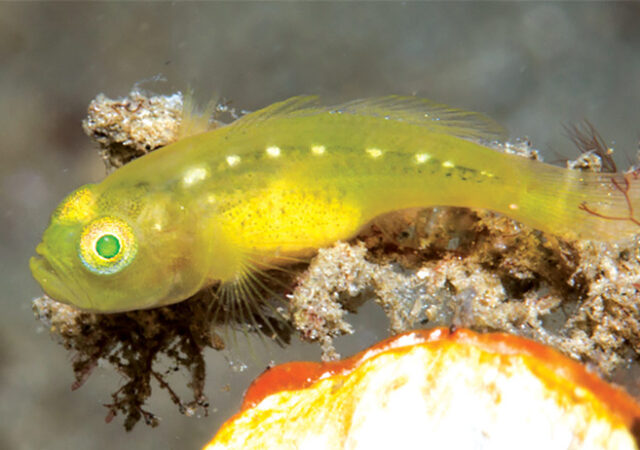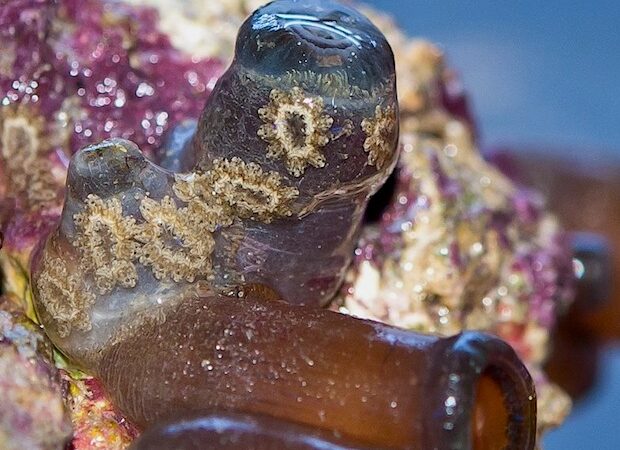Paleontologists have discovered the fossil of a 500 million-year-old tunicate in the Marjum Formation of Utah. Named Megasiphon thylakos after its two large, prominent siphons and sack-like body, the discovery is important because tunicates have a poor fossil record (due…
Lubricogobius tunicatus Is A Wonderful New Species Of Slippery Goby
Lubricogobius tunicatus is the newest species to join this fascinating group of slippery gobies. The Tunicate Slippery Goby was discovered in Milne Bay, Papua New Guinea, adding to the long list of species that continue to be discovered in this biodiverse…
Tunicate that ejects guts could help humans regenerate organs
A tunicate that spews its internal organs when stressed could lead scientists to scientific breakthroughs in human tissue regeneration. A recent study in Scientific Reports took a closer look at Polycarpa mytiligera a common tunicate found in reefs off the…
Tunicates growing on zoanthids is probably nothing to worry about
We love a good reef aquarium Critter ID mystery so when Extreme Corals shared around this photo of some odd looking things growing on their zoanthids, our inner Sherlock Holmes was on the case. The colonial nature of the benthic…





